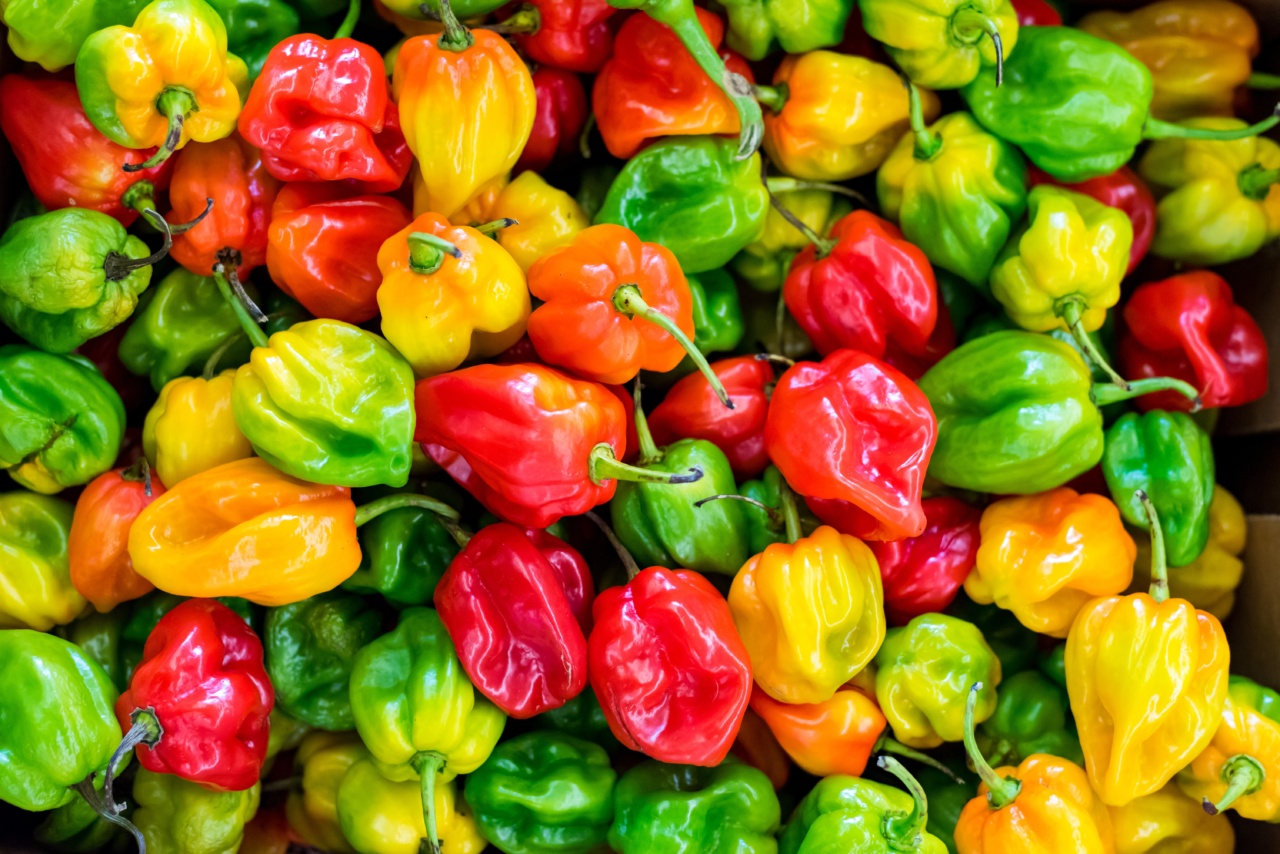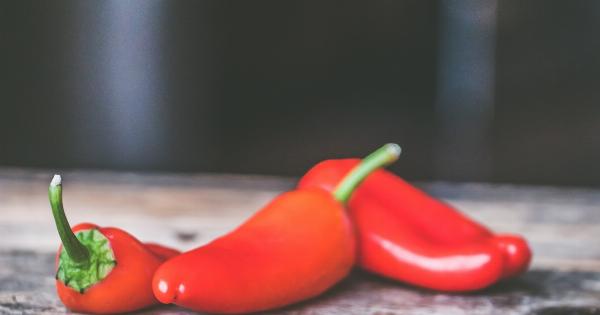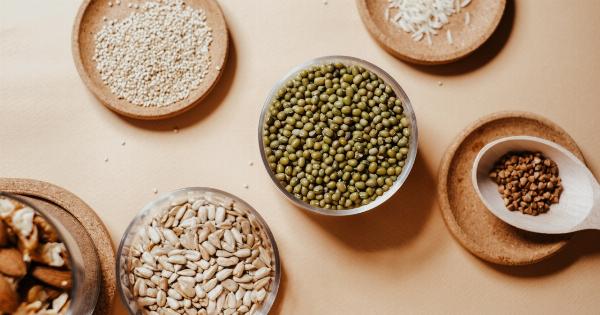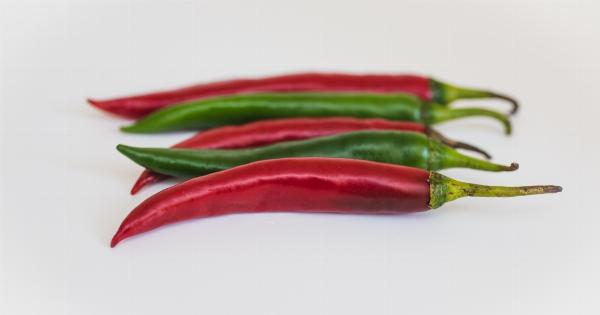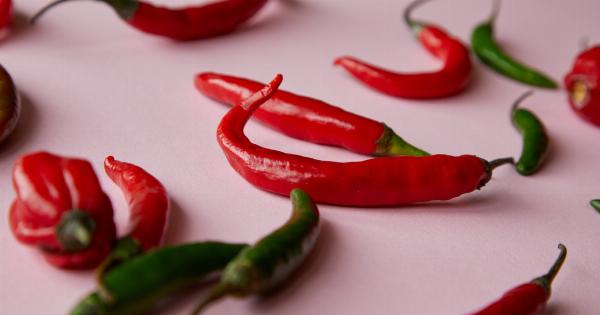Hot peppers have become increasingly popular in recent years, adding a fiery kick to various dishes and elevating the flavor profiles of countless cuisines around the world.
With their unique heat levels and distinct flavors, hot peppers have become an essential ingredient for adventurous home cooks and professional chefs alike. In this article, we will delve into the world of hot peppers, exploring their various types, heat levels, and culinary uses.
The Scoville Scale: Measuring Pepper Heat
When it comes to determining the heat of hot peppers, the Scoville Scale serves as a reliable measurement.
Developed by pharmacist Wilbur Scoville in 1912, the Scoville Scale measures the concentration of capsaicin, the compound responsible for the fiery sensation we experience when consuming hot peppers. The higher the Scoville heat units (SHUs), the spicier the pepper.
Jalapeno Pepper
Starting off with a relatively mild contender on the Scoville Scale, the jalapeno pepper registers between 2,500 to 8,000 SHUs.
It is a staple in Mexican cuisine and offers a pleasant heat level that enhances dishes such as salsas, guacamoles, and various meat-based dishes. While many enjoy the heat of the jalapeno, it is still manageable for those who prefer milder flavors.
Serrano Pepper
With a slightly higher heat level than jalapenos, serrano peppers range from 10,000 to 23,000 SHUs. These peppers pack a punch, but they also bring a vibrant flavor to dishes.
Serrano peppers are excellent additions to hot sauces, pico de gallo, and any recipe that calls for a bold and spicy kick.
Cayenne Pepper
Moving up the Scoville Scale, we encounter the cayenne pepper, which typically falls between 30,000 to 50,000 SHUs.
Known for its brilliant red color and intense heat, cayenne peppers are often used in powdered form, adding spice to dishes like curries, stews, and even chocolate! Cayenne peppers are valued not only for their heat but also for their vibrant flavor.
Thai Bird’s Eye Chili
As we venture into the higher levels of heat, Thai Bird’s Eye Chili emerges as a popular contender. Ranging between 50,000 to 100,000 SHUs, these tiny peppers are commonly used in Southeast Asian cuisine.
They add an unmistakable heat to dishes like Thai curries, stir-fries, and spicy soups. Caution is advised when handling these peppers due to their intense heat.
Habanero Pepper
Now we enter the territory of fiery peppers with the habanero pepper, which sits between 100,000 to 350,000 SHUs. Recognized for its fruity undertones and searing heat, the habanero pepper spices up dishes like salsas, marinades, and jerk chicken.
Due to its high heat level, it is essential to use habaneros sparingly to avoid overwhelming the palate.
Ghost Pepper
The ghost pepper, also known as Bhut Jolokia, is a force to be reckoned with. It holds the Guinness World Record for the hottest chili pepper, ranging from 855,000 to 1,041,427 SHUs. Originating from India, this pepper is not for the faint of heart.
It requires cautious handling and measured usage in dishes like hot sauces, chutneys, and even spicy chocolate. The intense heat of the ghost pepper requires careful consideration in culinary applications.
Carolina Reaper
As the reigning champion in the pepper world, the Carolina Reaper surpasses the ghost pepper’s fiery reputation. Created by crossbreeding various peppers, the Carolina Reaper hits an astounding 1,400,000 to 2,200,000 SHUs.
Classified as an extremely hot pepper, it offers an intense and long-lasting burn. Due to its extreme heat level, the Carolina Reaper is typically used sparingly in dishes like spicy marinades, salsas, and hot sauces.
Choosing and Handling Hot Peppers
When selecting hot peppers, it is essential to consider their heat levels and intended culinary use. Experimenting with different types of peppers provides an opportunity to discover new flavor profiles and heat intensities.
However, it is crucial to handle hot peppers with care, as their oils can cause skin and eye irritation. Wearing gloves and avoiding contact with the face can help prevent discomfort during the preparation process.
Culinary Uses of Hot Peppers
Hot peppers offer a range of culinary uses beyond simply adding heat to a dish. They bring unique flavors, vibrant colors, and depth to recipes. Here are a few popular ways to incorporate hot peppers into your culinary repertoire:.
1. Spicy Sauces and Marinades
Hot peppers are key ingredients in the creation of spicy sauces and marinades.
Whether you’re whipping up a tangy BBQ sauce, a zesty Sriracha mayo, or a fiery jerk marinade, hot peppers provide the heat and complexity necessary to elevate these condiments.
2. Flavorful Salsas and Chutneys
Salsas and chutneys are perfect accompaniments to many dishes, and hot peppers are often the star ingredient. From classic tomato salsa to exotic fruit chutneys, incorporating hot peppers ensures a spicy and tantalizing flavor experience.
3. Fiery Stir-Fries
Add a kick to your stir-fries by incorporating hot peppers. Whether it’s spicy Thai basil chicken or Szechuan beef, hot peppers infuse these dishes with their signature heat, making them both flavorful and exciting.
4. Flavoring Soups and Stews
For those seeking warmth and heat in their soups and stews, hot peppers are the perfect addition. Whether you’re making a spicy chili or a rich curry, hot peppers bring depth and complexity to these comfort dishes.
5. Bold and Spicy Beverages
Hot peppers can even find their way into beverages. From spicy margaritas to pepper-infused cocktails, these unique creations showcase the versatility of hot peppers beyond their traditional culinary applications.
Hot peppers are more than just a way to add heat to your dishes; they provide distinctive flavors and intensity that elevate culinary experiences.
Regardless of your tolerance for spice, exploring the world of hot peppers opens doors to exciting culinary adventures.
